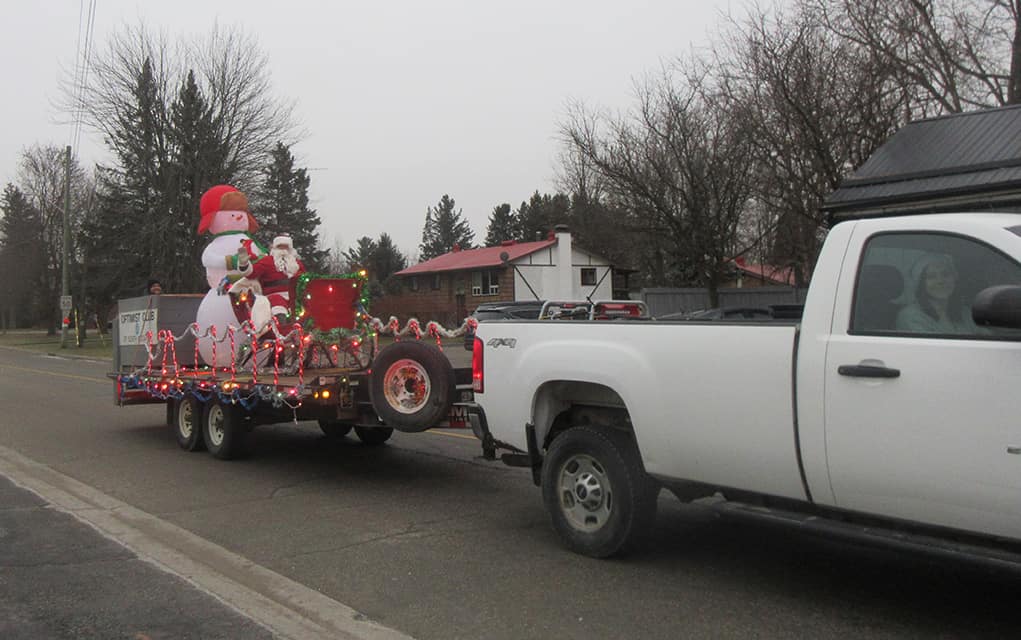Two down, one to go.
On the heels of a recommendation to tear down an old steel bridge on Middlebrook Road, Woolwich is now eyeing the closure of a similar structure on Peel Street in Winterbourne. The fate of the 130-year-old Glasgow Street bridge in Conestogo is also up in the air pending a review expected early next year.
Both the Middlebrook and Peel bridges are currently closed. The Glasgow bridge has been closed for repairs at numerous times in recent years but is currently open to traffic.
The review process for the Middlebrook bridge, on a boundary road with neighbouring Centre Wellington Township, has been the least contentious. There’s been more feedback on the Peel Street bridge, the subject of a December 11 public information session.
“We’ve had quite a lot of pushback,” said Ryan Tucker, an engineering project supervisor with the township, of the recommendation to close the Peel Street structure.
Cost is the biggest factor, as a report commissioned by the township estimates it would cost $1.6 million to rehabilitate the steel truss bridge, built in 1913, for vehicular traffic. Maintaining it simply for pedestrian use would cost $1.1 million. In both cases, another $1.1 million in today’s dollars would have to be spent in 2040, followed by $700,000 to demolish the bridge when it comes to the end of its lifespan in 2050.
Replacing the bridge with a new one comes with a projected cost of $5.5 million.
“The main driver is economic,” said Tucker, noting that kind of money would blow a year’s capital budget on one project.
Traffic volumes don’t warrant keeping the bridge open – commuter traffic was estimated at 125 vehicles per day prior to the structure’s closing.
Simply closing the bridge and leaving it in place would cost $475,000, with another $150,000 by 2040 and the demolition costs in 2050. Keeping the bridge maintains its heritage qualities and leaves future administrations with options down the line.
For now, engineering staff are awaiting the review of the Glasgow Street bridge before bringing a final report to Woolwich council, where the decisions will be made.
Ward 3 councillors Murray Martin and Larry Shantz say they’ve receive some comments about the Peel Street situation, with Martin this week circulating comment sheets to the Mennonite community that relies on horse-drawn buggies, many of whom previously used the bridge.
For Winterbourne resident Sonya Sommerville, the impact on the Mennonite community is one of the big factors that needs to be taken into account before closing the bridge – “It’s got to be no small inconvenience to them.”
Likewise, there’s the issue of limited recreational options in the village and the bridge’s use by pedestrians, cyclists and snowmobilers. Peel Street and the bridge offers an alternative from a busy regional road, Katherine Street, she said.
“I don’t know that they’ve looked at the full scope of the implications on the wider community,” she said in an interview.
“We don’t have a lot of options to work with.”
The sole river crossing between Conestogo and Line 86, the bridge is also a factor in emergency services access, Sommerville added.
“Sometime that bridge is the quickest route from point A to point B.”
Some of her neighbours share similar concerns. She encourages residents to make their opinions known before it’s too late.
“Sometimes it just comes down to money. Sometimes you have to look beyond the money and look longer-term.”
Jared Puppe, the township’s acting manager of engineering, is aware that the people living nearest the old steel bridges want to see the structures remain open – “People like the structures, and want them around.”
But money is likely to be the deciding factor, with the costs being weighed against the amount of use the bridges get.
The Glasgow Street bridge is likely to be the trickiest decision, as it sees the most traffic of the three, some 1,500 cars a day. But even that’s fairly small in comparison to the replacement cost of $5 million to $7 million, not to mention the drawn-out process for building a new bridge today.
“They’re quite tricky to deal with,” said Puppe.
Complicating matters still further is the heritage value of all three bridges, each of which has significant historical value. Peel and Middlebrook represent half of the remaining camelback truss bridges in the Region of Waterloo. Glasgow’s pratt truss is unique. The steel spans and single-lanes harken back to an earlier time in the region’s history, adding to the heritage landscape in their respective locations. Replacing them removes that value from the get-go, as does demolition. But the engineering reports suggest removal is almost inevitable as time eventually takes its toll.
In the case of the Peel Street span, keeping the bridge open to some kind of use costs money today and tomorrow, with eventual demolition most likely, said Tucker.
“In 20 years, you’re looking at another major rehabilitation … and 30 years until removal in most scenarios.”
But keeping the bridge in place for now does leave future decision-makers with options, he added.
“The engineer included that $700,000 (in 2050) as a placeholder for removal. It might not happen.”
A public information session related to the Glasgow Street bridge is set for January 29. Following that review, staff expects to come to council with a recommendation report on all three bridges by late-winter or spring.









